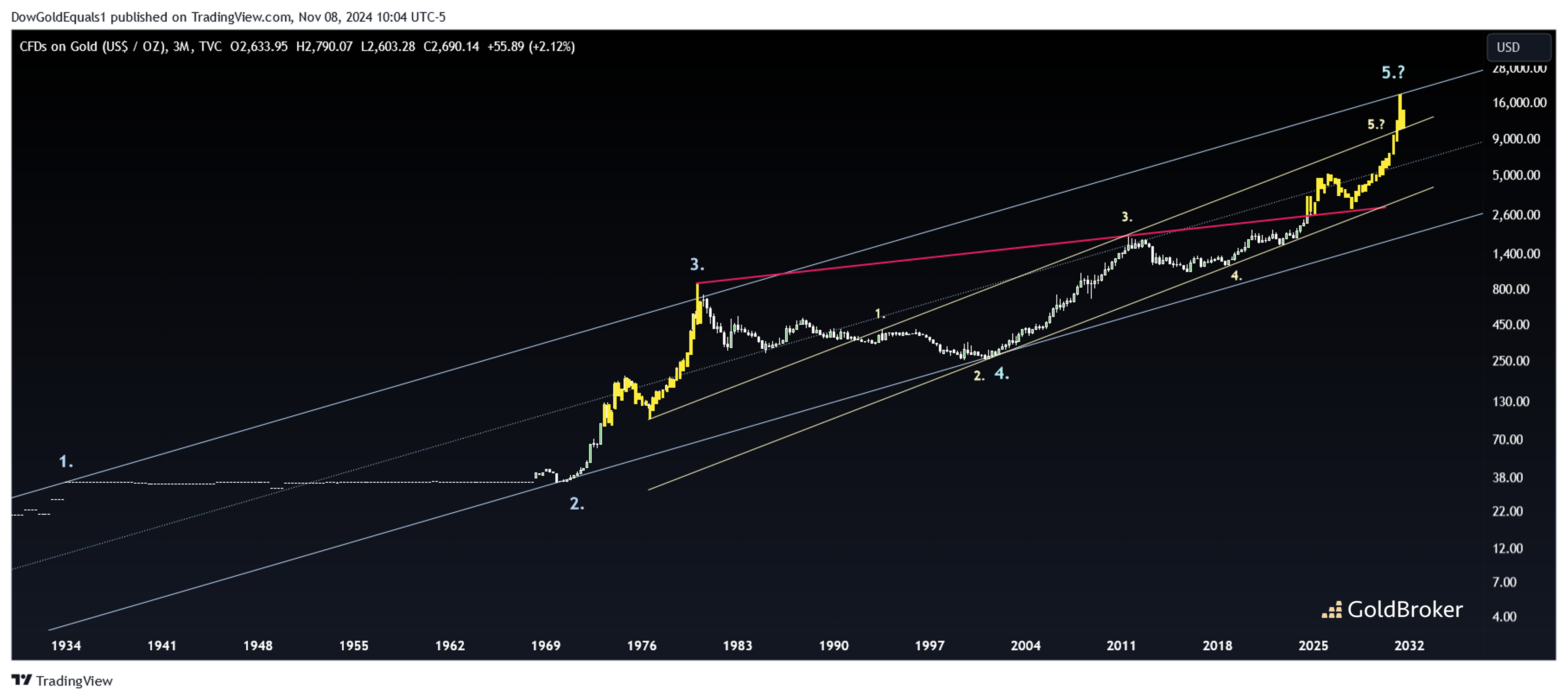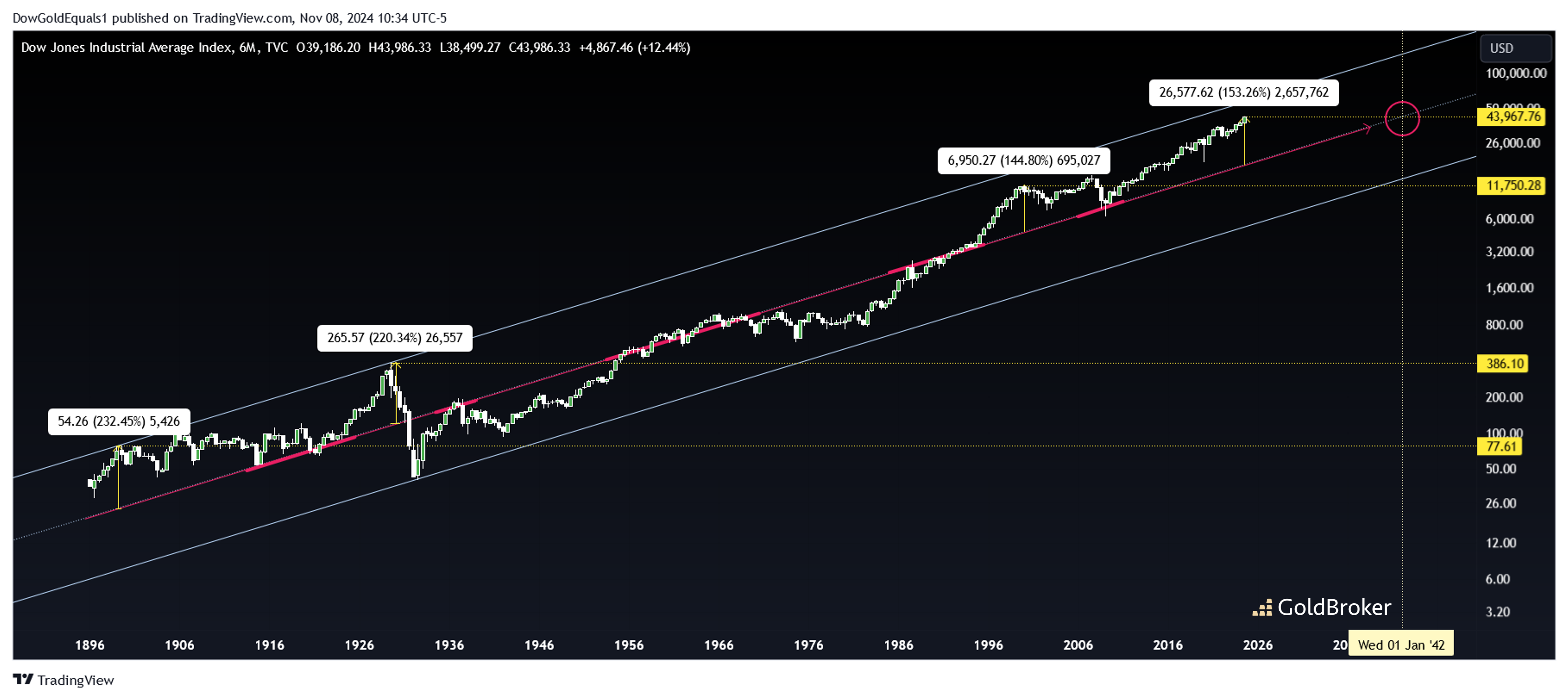The Golden Road To $20,000 And Dow's Lost Decades Ahead
This week, we'll look at a couple of interesting long term charts of both gold and the Dow to see how technical analysis suggests they MIGHT play out in the decades ahead. While there is a healthy dose of speculative analysis in both charts, my goal this week is to blend creativity and open-mindedness with the historical record of the price action to reveal possible long-term paths that won't surprise you should they unfold over the coming years.
(Click on image to enlarge)
The first chart we'll look at is gold, and immediately it should be plain to see that it has traded within the blue 4-point channel that began when gold was revalued to $35 in the 1930s, forming Point 1. Point 2 was formed just as gold began trading freely in the 1970s; Point 3 was achieved at the 1980 mania top; and Point 4 at the 2001 bottom - all historic times for gold. Next, note that gold has traded within a smaller yellow channel that began with Point 1 in the 1990s. There is nothing speculative about the 4 existing points of these channels. However, whether each can reach Point 5, how and when they get there is where I will take some creative liberty.
IF we were to see a fractal move of the 1970s gold bull run, the following would occur:
- Gold would perfectly backtest the trendline connecting the 1980 and 2011 tops,
- Gold would achieve Point 5 of the blue channel within the next decade around $20,000,
- Gold would then perfectly backtest the yellow channel from above,
- Gold would hit the following values in this order: $5,000, $2,500, $20,000, $10,000.
There are no guarantees that gold will take this fractal path. However, if it did, it would make complete sense from a technical analysis perspective. The question you now have to ask yourself is this: Is this a possible ride you are willing to stomach over the next 10 years?
(Click on image to enlarge)
The next chart we'll look at is the Dow, and you'll see that its entire trading history can be described as an ascending channel that's defined more by its midline price action than its lower and upper rails. This is a classic case of when the midline reveals a channel that most fail to acknowledge. Next, you'll note that whenever price gets stretched to extremes away from the midline, it always makes a slow, grinding return and can take decades for price to again achieve and surpass the old high permanently. The high of 1899 wasn't passed for good until 1933! The high of 1929 wasn't eclipsed permanently until 1954! Even the 2000 high wasn't passed permanently until 2012. Notice that in each of these cases, price dipped below the channel midline before eclipsing its old high.
Once again, the Dow finds itself historically stretched from its midline. Where it returns, nobody knows, but one thing is certain: The current level of the Dow intersects its channel midline in 2042, 17 years from now! By historical standards, there would be nothing unusual about that value at that date. One would look at the chart and tell you it makes perfect sense. Even scarier, so too would make sense a trip to the channel's lower rail, which doesn't exceed 10,000 until 2037!
Something to think about.
More By This Author:
Gold Correction After Trump's Election: Why 2024 Is Not 2016
Gold On A Parabolic Rise
Gold On It’s Way To New Heights
Disclosure: GoldBroker.com, all rights reserved.





